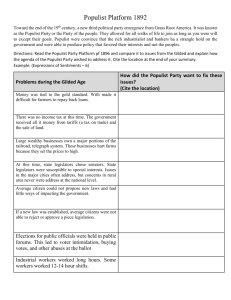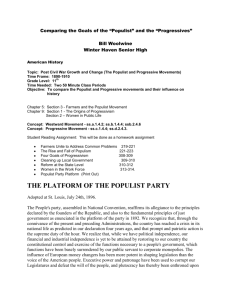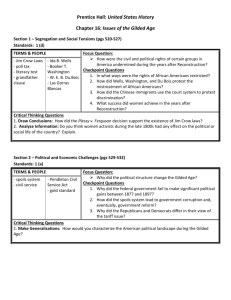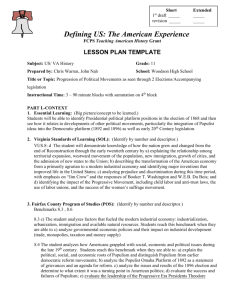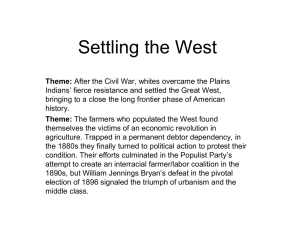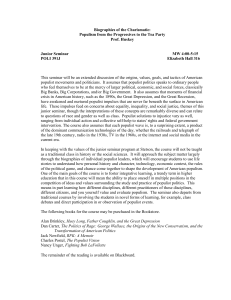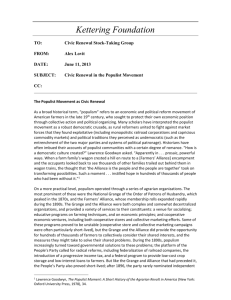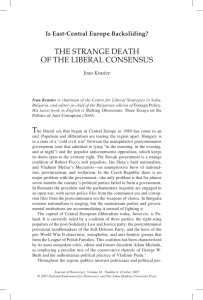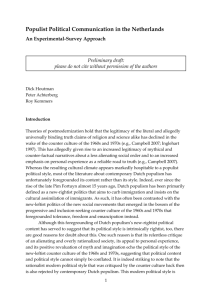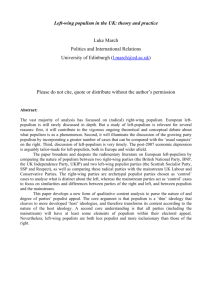Populism stands as one of the major protest movements of 19th
advertisement
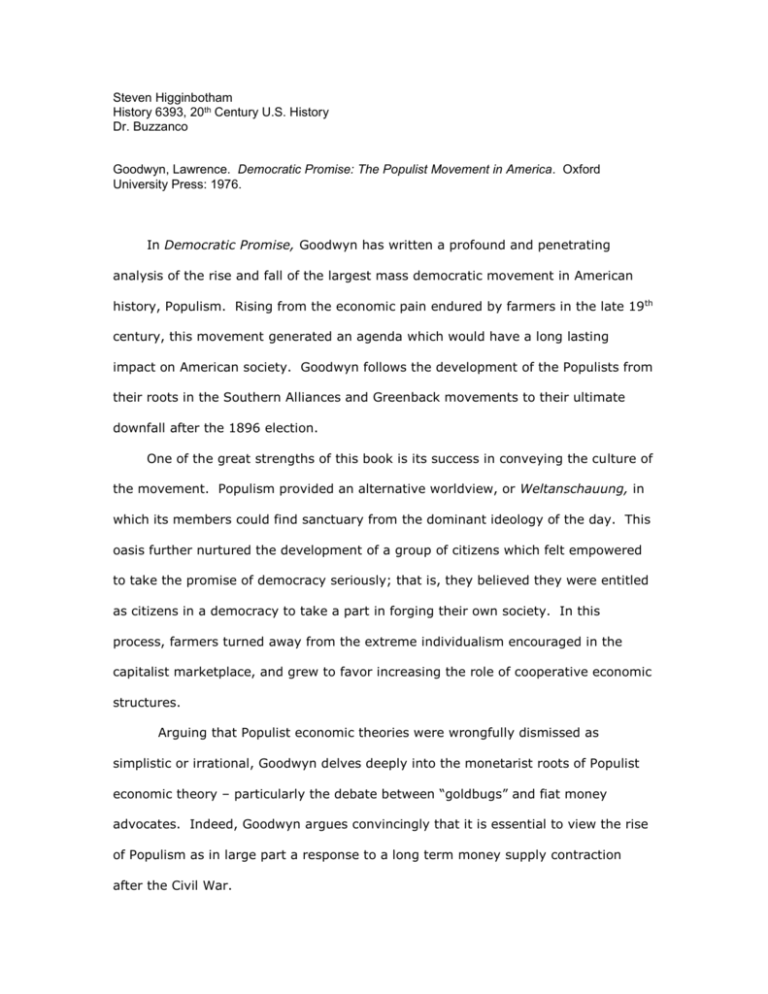
Steven Higginbotham History 6393, 20th Century U.S. History Dr. Buzzanco Goodwyn, Lawrence. Democratic Promise: The Populist Movement in America. Oxford University Press: 1976. In Democratic Promise, Goodwyn has written a profound and penetrating analysis of the rise and fall of the largest mass democratic movement in American history, Populism. Rising from the economic pain endured by farmers in the late 19 th century, this movement generated an agenda which would have a long lasting impact on American society. Goodwyn follows the development of the Populists from their roots in the Southern Alliances and Greenback movements to their ultimate downfall after the 1896 election. One of the great strengths of this book is its success in conveying the culture of the movement. Populism provided an alternative worldview, or Weltanschauung, in which its members could find sanctuary from the dominant ideology of the day. This oasis further nurtured the development of a group of citizens which felt empowered to take the promise of democracy seriously; that is, they believed they were entitled as citizens in a democracy to take a part in forging their own society. In this process, farmers turned away from the extreme individualism encouraged in the capitalist marketplace, and grew to favor increasing the role of cooperative economic structures. Arguing that Populist economic theories were wrongfully dismissed as simplistic or irrational, Goodwyn delves deeply into the monetarist roots of Populist economic theory – particularly the debate between “goldbugs” and fiat money advocates. Indeed, Goodwyn argues convincingly that it is essential to view the rise of Populism as in large part a response to a long term money supply contraction after the Civil War. After a long organizing struggle involving traveling lecturers and intense organizing efforts, Alliance members seized upon cooperatives as a way to remedy their dire situation. However, as a result of economic strangulation by the banks and other institutions, many cooperatives failed. These setbacks led to the establishment of the People’s (Populist) Party, an institution it was hoped could break through the entrenched power of the two party system and their corporate masters. The Populist Party put forth a diverse platform that addressed monetary issues, bimetallism, railroads, land rights, government regulation of business, and perhaps the most original of all their ideas, the creation of a sub-treasury system in which the government would store surplus crops and pay farmers. Goodwyn argues that the association of Populism with bimetallism was a distraction; that fiat money was the goal of the Greenbackers and that the coinage of silver was a short-term fix that left the larger problem of a constricted money supply in place. After the defeat of William Jennings Bryan, the Populist morale failed, and the party folded. This book is certainly required reading for all those interested in the populist movement. The book more than satisfies its ambitions to provide a comprehensive, detailed, and original account of the Populist Movement. Still, more could have been said in regards to the relationship of African Americans and Populists, as well as the effect of the Populist movement in contributing to the major shift in US foreign policy as America entered a new imperialist phase to find markets for its surplus goods abroad. Nevertheless, it is hard to find fault with the impressive scholarship in this pioneering study.

